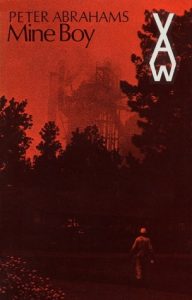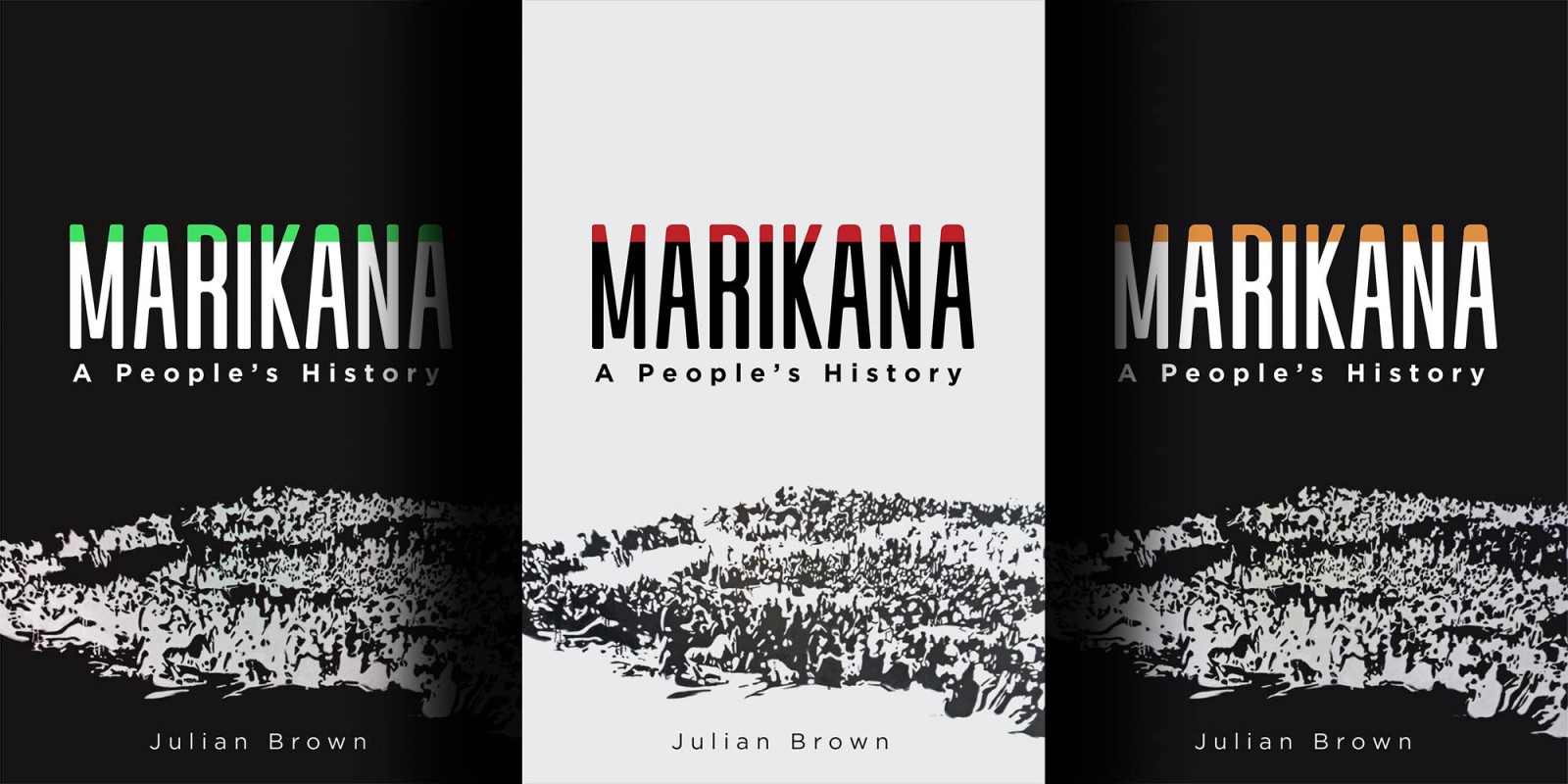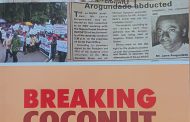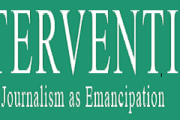Intervention serves a contentious review sourced from Johannesburg based Daily Maverick whose preface to the review is: In Marikana: A People’s History, Julian Brown, a political studies professor at Wits University, has crafted what is probably the most comprehensive account to date of the Marikana massacre and its aftermath. But there are some curious omissions which detract from what is, in many ways, a fine work of scholarship.

The reviewer
By Ed Stoddard
On 16 August this year, South Africa will mark the 10th anniversary of the Marikana massacre, which saw 34 mine workers on a wildcat strike at Lonmin’s Marikana mine shot dead by police.
The atrocity might also be called the Marikana Murders, because that’s what it was – cold-blooded murder. The deadly intent of the police was first uncovered by reporting in Daily Maverick, yet a decade later, justice has still been denied.
Wits academic Julian Brown has brought this tragic tale to life in what is probably the most comprehensive account of the massacre, building a compelling case against the police and the mining company as the perpetrators of this shocking crime.
Subtitled A People’s History, it follows a rich vein of scholarship that seeks to give voice to people such as miners and their families, putting their experiences at the centre of the historical stage.
The work draws extensively on interviews with surviving strikers and their families, while presenting a forensic unpicking of the final report of the Marikana Commission of Inquiry.
“My husband was not a violent person … he was a good person. He could never pick a fight with anyone,” is how Zameka Nungu remembered her husband Jasckson Lehupa, who was among the victims of the massacre.
Noting the “… chasm between the wealth of evidence produced in the course of the Commission of Inquiry’s processes and the poverty of its final report”, Brown sets out to correct the record, including the many falsehoods spun by the police to cover their tracks at the two sites where the massacre took place.
Among the most egregious of these was the planting of weapons by or on the bodies of the mine workers shortly after they had been killed, to give the impression that they were all armed and dangerous.
This was done at both Scene One, where the first 17 mine workers who were killed were gunned down in a lethal eight seconds, and Scene Two, where another 17 mine workers were shot to death as they hid between rocks and beneath bushes or attempted to surrender.
In short, they were hunted down in a predatory manner as if they were prey.
Then there were photographs taken and then hidden away which showed mine workers – who subsequently died from their wounds – still alive. They were never given the immediate medical attention which could have saved their lives.

Flashback
Brown recounts how flaws in the police narrative were initially uncovered days after the massacre by the dogged work of reporters for this publication.
For Daily Maverick, Mandy de Waal reported on a University of Johannesburg probe into police efforts to clean up the massacre site, while Greg Marinovich’s efforts revealed how the physical evidence at Scene Two revealed that the police account of a “militant group” charging them was a baseless lie.
Brown is critical of much of the press coverage of the massacre, while acknowledging the role it played in challenging the official version.
The Commission of Inquiry, headed by Judge Ian Farlam, comes under withering scrutiny in this book.
Its thoughtlessness towards the families of the murdered men was at times breathtaking.
Brown recounts how the commission, on its first morning, read out a roll call of the dead – a process that was meant to have family members standing up as the names of their deceased loved ones were announced. But none was present to perform their role in this transparent piece of theatre.
Shambolic organisation meant that several families were unaware that the inquiry had even started, and no one had thought to provide them with transport to the venue.
That set the tone for the disrespect that was often shown to the families. The South African state can always be counted on to show contempt for those it claims to “serve”.
Brown notes that in its “concluding remarks”, the commission held the strikers at least “partly responsible” for Lonmin’s refusal to negotiate and the heavy police presence.
“The taking up of arms and the resorting to violence is neither constructive nor appropriate in protecting and enforcing one’s rights,” the report said.
“The tone and substance of this final condemnation of the striking workers stands out because no such similar condemnation is given in this report to the actions of the police officers and commanders,” Brown writes.
“Individual police officers are defended in the report, their actions excused and justified, and their liability for their actions minimised.
“The violent actions of some striking workers are – by comparison – taken to stand for the actions of all who participated in the strike, and all are thus condemned violently by association.”
Lonmin – a company that no longer exists, a point we will return to shortly – also comes across badly. The company in some cases used Teba – a labour brokering company – to inform families that their relatives were among the dead.
Lonmin’s well-known failure to make good on many of its promises regarding housing for workers also features in the narrative, along with its steadfast refusal to negotiate with the strikers, which helped set the stage for the massacre.
Brown also highlights the background role of the migrant labour system and the creation of squalid “company towns” such as Marikana. Labour and social grievances are deeply rooted in the platinum belt and are a product of decades of grotesque exploitation. The consequences of this state of affairs are still playing themselves out.
This book and subsequent revelations have made this reviewer – who covered the rise of Amcu on the platinum belt – reassess some of his own assumptions and reporting from a decade ago.
Still, this reviewer has some quibbles. Brown downplays the admittedly murky role of union rivalry as one of the drivers of the violence that preceded the massacre, while also providing background into how NUM’s lack of focus on traditional union issues paved the way for its loss of appeal among its members.

What might an ace trade unionist who is, however, the incumbent president of South Africa be doing about a dark spot as Marikana?
Amcu president Joseph Mathunjwa said in testimony to the commission that the strike was not a product of union rivalry, and that neither NUM nor Amcu had any control over it. NUM disagreed with that version of events in its testimony.
It probably was the case that neither union was in control of the strike when that fateful day dawned. But interunion tensions – effectively a turf war between NUM and Amcu – without question preceded and followed the events of 16 August 2012, and were for years a source of violence and unrest on the platinum belt and in the gold fields.
This reviewer was one of the first journalists to attend an Amcu rally, one held weeks before the massacre at an Impala Platinum venue. I was invited after making contact with Crispen Chinguno, who at the time was doing research on the platinum belt for his PhD at Wits and is cited in Brown’s book.
Ahead of the rally, my Amcu escorts gained me illegal entry to an Implats mine, where they proudly showed me how they had taken over the office premises once held by NUM.
The message was blunt: Amcu was taking over and was clearly in charge.
Even mine security was clearly intimidated by this upstart union, which is how I was able to gain access to the mine’s premises without the company’s permission. Subsequent allegations of intimidation against Amcu often seemed credible.
Indeed, there was often an air of menace and intimidation at Amcu rallies – I covered several, and that is one of my lasting impressions.
Writing about the five-month platinum strike in 2014 led by Amcu, Brown makes no mention of the clear intimidation that was involved to keep the rank and file in line.
The Amcu rally where the “strike vote” was taken – and which I attended – was done in the open and, trust me, only a fool would have dared utter “nay”.
It’s also the case that almost all Amcu strikes, and the union’s early recruitment drives on the platinum belt and gold mines, have triggered violence. And both Amcu and NUM members have been murdered over the years in obvious hits. These are facts and it’s easy enough to join the dots.
Against this backdrop, Brown’s view of Amcu at times comes across as a rose-tinted one.
An outside reader of this account, with little knowledge of the mining industry, would also be forgiven for forming the impression that Lonmin was still functional. That would be a miracle – a company raised from the dead.
Brown often treats Lonmin as if it was still alive and kicking, at one point writing that “Lonmin has continued to be a major player in the platinum industry”.
In fact, its obituaries were written in 2019, when the assets of the company – fatally hobbled by, among other things, the legacy of the massacre – were taken over by Sibanye-Stillwater. The book was published this year.
In his conclusion, titled The Work of Mourning, no mention is made of the Marikana renewal process that Sibanye has launched, including the building of homes for the families of the murdered mine workers. This stands in unflattering contrast to allegations that Amcu has done little for the bereaved.
The failure to mention the fact that Lonmin no longer exists and the renewal and healing process undertaken by Sibanye are glaring omissions.
This – along with an often blinkered view of Amcu – detracts from what in many ways is a fine work of scholarship and an authoritative account of the events surrounding this tragedy. DM/BM




























